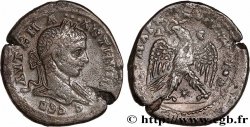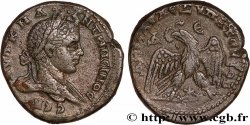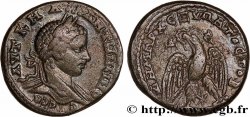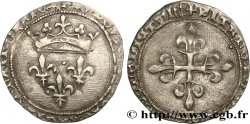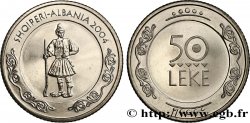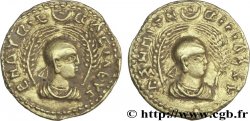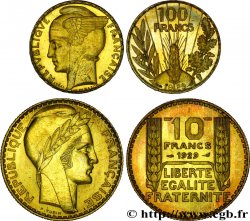E-auction 94-48974 - bpv_305563 - ELAGABALUS Tétradrachme syro-phénicien
Чтобы принять участие в торгах, вы должны войти в систему и стать подтвержденным участником аукциона. Войдите, чтобы сделать ставку. Ваш аккаунт будет подтвержден в течение 48 часов. Не ждите до закрытия торгов, чтобы зарегистрироваться.Сделав ставку на данный товар, вы вступаете в юридическое соглашение на покупку выбранного товара и нажатием кнопки «Сделать ставку» подтверждаете принятие вами условий интернет-аукционов cgb.fr.
Ставка может бить сделана только в полном эквиваленте евро. Торги закроются согласно времени, указанному в описании товара, все ставки, сделанные после закрытия торгов, учитываться не будут. Не следует откладывать предложение вашей ставки до последнего момента, так как система может не успеть обработать вашу заявку, и ваша ставка не будет принята. Более детальную информацию вы найдёте здесь: FAQ по интернет-аукционам.
БЕСПЛАТНО.
БЕСПЛАТНО.
| Оценить : | 50 € |
| Цена : | 46 € |
| Максимальная предлагаемая цена : | 50 € |
| Конец торгов : | 02 February 2015 16:11:30 |
| Участников : | 8 Участников |
Тип Tétradrachme syro-phénicien
Дата: 218-220
Монетный двор / Город: Antioche, Syrie, Séleucie et Piérie
Металл: billon
Диаметр: 25,00 mm
Ориентация осей монеты: 12 h.
Вес: 11,39 g.
Комментарии о состоянии
Faible usure mais corrosion en plaques
Ссылки в каталоге: :
Происхождение:
Cet exemplaire est le 0249_014 de la base TSP
Лицевая сторона
Аверс: описание: Elagabal tête laurée à droite, les rubans de la couronne de lauriers flottant derrière la tête, un reste de draperie devant et derrière le buste.
Аверс: легенда: AUT K M A ... ANTwNEINOS SEB
Аверс: перевод: Empereur César Marc Aurèle Antonin Auguste.
Обратная сторона
Реверс: Описание: Aigle au style d’Émèse debout à droite sur une ligne de terre, les ailes déployées, la tête et queue à gauche, tenant une couronne perlée de laurier dans son bec, une étoile à huit branches entre les pattes.
Реверс: легенда: DHMARC EX UPATOSTOB / .D. - .E.
Реверс: перевод: (Puissance tribunitienne, consul pour la deuxième fois).
Комментарий
Bien que classé par commodité à Antioche, ce type a été attribué au graveur d’Emèse, voire à l’atelier d’Emèse, pour trois raisons. Ce style de revers est celui de l’émission à l’Adventus (Prieur 253), unique par sa représentation et par la couronne radiée. Il semble logique que la bataille décisive ayant été livrée devant Emèse, la frappe y ait été initiée pour payer les troupes : où mieux qu’à Emèse ?
Au final, le style du graveur est proche des Caracalla pour Emèse. Accessoirement, le métal de ces séries (Prieur 249/253) semble bien meilleur que la moyenne des autres frappes ; les frappes d’Elagabal se terminant en cuivre légèrement billoné, on peut supposer que les meilleurs alliages se placent au début du règne.
Les émissions d’Elagabal se classent par référence à leur graveur de revers, quand celui-ci peut être rapproché d’une émission précédente identifiée pour une ville, par le style plus généralement quand ce n’est pas le cas. On trouve une trentaine de graveurs de revers et moins d’une dizaine de graveurs de droit.
La question de savoir si les ateliers de Caracalla, encore en production sous Macrin, furent conservés ou si tous les graveurs furent regroupés à Antioche n’est pas tranchée, faute d’une analyse des liaisons de coins. On pense néanmoins que ce fut le cas, ne serait-ce que par la présence systématique du Delta Eta dans le champ du revers.
Tous les tétradrachmes officiels d’Elagabal portent la date du deuxième consulat, le hiatus entre Caracalla et le nouvel empereur étant considéré comme le premier consulat de celui-ci. À en juger par certaines émissions, les frappes se terminent certainement, dans une dégénerescence complète de l’aloi et du style, vers 220, en tous cas avant le troisième consulat.
On note que les sigma sont gravés en C.
Dans la base TSP maintenue par Michel Prieur, cinquante-sept exemplaires sont maintenant répertoriés dont en musées Paris(ex Gilmore), British Museum, ANS (2), Jérusalem (2), Israel State Museum, Berlin, Boston (ex Gush Halav Hoard) et Yale (2 one ex Doura).
Although conveniently classified in Antioch, this type has been attributed to the engraver of Emesa, or even to the workshop of Emesa, for three reasons. This style of reverse is that of the Adventus issue (Prieur 253), unique in its representation and in the radiated crown. It seems logical that since the decisive battle was fought in front of Emesa, the minting was initiated there to pay the troops: where better than in Emesa? In the end, the engraver's style is close to that of Caracalla for Emesa. Incidentally, the metal of these series (Prieur 249/253) seems much better than the average of the other strikes; the strikes of Elagabal ending in slightly billoned copper, we can assume that the best alloys are placed at the beginning of the reign.
The issues of Elagabalus are classified by reference to their reverse engraver, when this can be compared to a previous issue identified for a city, and by style more generally when this is not the case.. There are around thirty reverse engravers and less than ten obverse engravers..
The question of whether the Caracalla workshops, still in production under Macrinus, were preserved or whether all the engravers were grouped together in Antioch is not settled, due to the lack of an analysis of the die bonds.. It is nevertheless believed that this was the case, if only because of the systematic presence of Delta Eta in the field of the reverse.
All official tetradrachms of Elagabalus bear the date of the second consulship, the hiatus between Caracalla and the new emperor being considered the latter's first consulship.. Judging by some issues, the minting certainly ended, in a complete degeneration of alloy and style, around 220, in any case before the third consulate..
Note that the sigmas are engraved in C.
In the TSP database maintained by Michel Prieur, fifty-seven examples are now listed, including in museums in Paris (ex Gilmore), British Museum, ANS (2), Jerusalem (2), Israel State Museum, Berlin, Boston (ex Gush Halav Hoard) and Yale (2 one ex Doura)
Au final, le style du graveur est proche des Caracalla pour Emèse. Accessoirement, le métal de ces séries (Prieur 249/253) semble bien meilleur que la moyenne des autres frappes ; les frappes d’Elagabal se terminant en cuivre légèrement billoné, on peut supposer que les meilleurs alliages se placent au début du règne.
Les émissions d’Elagabal se classent par référence à leur graveur de revers, quand celui-ci peut être rapproché d’une émission précédente identifiée pour une ville, par le style plus généralement quand ce n’est pas le cas. On trouve une trentaine de graveurs de revers et moins d’une dizaine de graveurs de droit.
La question de savoir si les ateliers de Caracalla, encore en production sous Macrin, furent conservés ou si tous les graveurs furent regroupés à Antioche n’est pas tranchée, faute d’une analyse des liaisons de coins. On pense néanmoins que ce fut le cas, ne serait-ce que par la présence systématique du Delta Eta dans le champ du revers.
Tous les tétradrachmes officiels d’Elagabal portent la date du deuxième consulat, le hiatus entre Caracalla et le nouvel empereur étant considéré comme le premier consulat de celui-ci. À en juger par certaines émissions, les frappes se terminent certainement, dans une dégénerescence complète de l’aloi et du style, vers 220, en tous cas avant le troisième consulat.
On note que les sigma sont gravés en C.
Dans la base TSP maintenue par Michel Prieur, cinquante-sept exemplaires sont maintenant répertoriés dont en musées Paris(ex Gilmore), British Museum, ANS (2), Jérusalem (2), Israel State Museum, Berlin, Boston (ex Gush Halav Hoard) et Yale (2 one ex Doura).
Although conveniently classified in Antioch, this type has been attributed to the engraver of Emesa, or even to the workshop of Emesa, for three reasons. This style of reverse is that of the Adventus issue (Prieur 253), unique in its representation and in the radiated crown. It seems logical that since the decisive battle was fought in front of Emesa, the minting was initiated there to pay the troops: where better than in Emesa? In the end, the engraver's style is close to that of Caracalla for Emesa. Incidentally, the metal of these series (Prieur 249/253) seems much better than the average of the other strikes; the strikes of Elagabal ending in slightly billoned copper, we can assume that the best alloys are placed at the beginning of the reign.
The issues of Elagabalus are classified by reference to their reverse engraver, when this can be compared to a previous issue identified for a city, and by style more generally when this is not the case.. There are around thirty reverse engravers and less than ten obverse engravers..
The question of whether the Caracalla workshops, still in production under Macrinus, were preserved or whether all the engravers were grouped together in Antioch is not settled, due to the lack of an analysis of the die bonds.. It is nevertheless believed that this was the case, if only because of the systematic presence of Delta Eta in the field of the reverse.
All official tetradrachms of Elagabalus bear the date of the second consulship, the hiatus between Caracalla and the new emperor being considered the latter's first consulship.. Judging by some issues, the minting certainly ended, in a complete degeneration of alloy and style, around 220, in any case before the third consulate..
Note that the sigmas are engraved in C.
In the TSP database maintained by Michel Prieur, fifty-seven examples are now listed, including in museums in Paris (ex Gilmore), British Museum, ANS (2), Jerusalem (2), Israel State Museum, Berlin, Boston (ex Gush Halav Hoard) and Yale (2 one ex Doura)







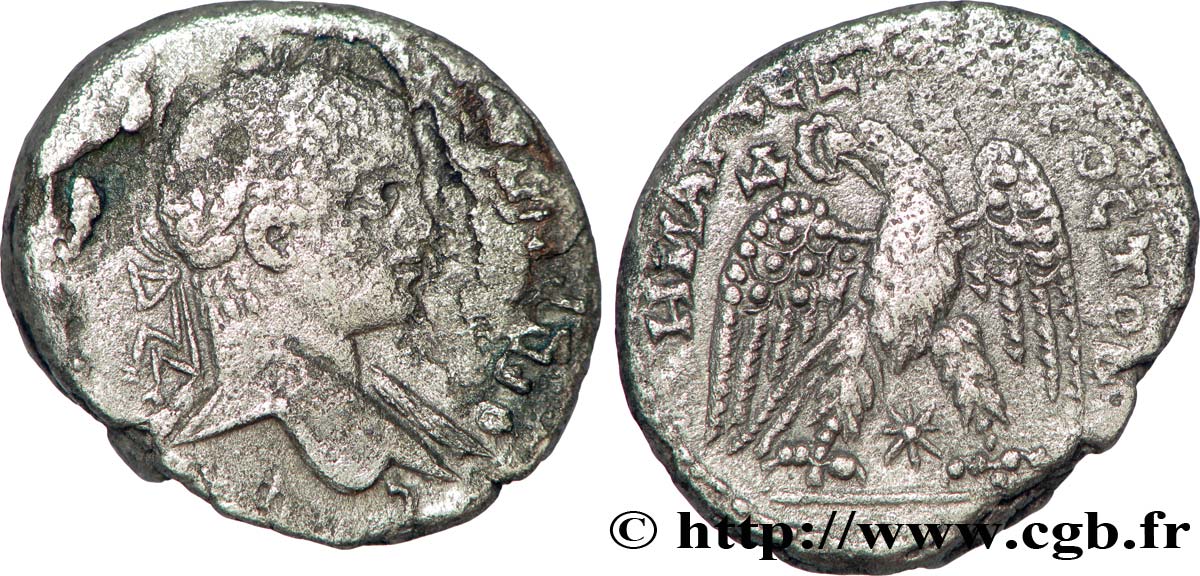
 Cообщить об ошибке
Cообщить об ошибке Распечатать страницу
Распечатать страницу Отправить мой выбор
Отправить мой выбор Задать вопрос
Задать вопрос Consign / sell
Consign / sell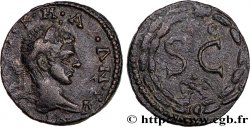
 Информация
Информация
